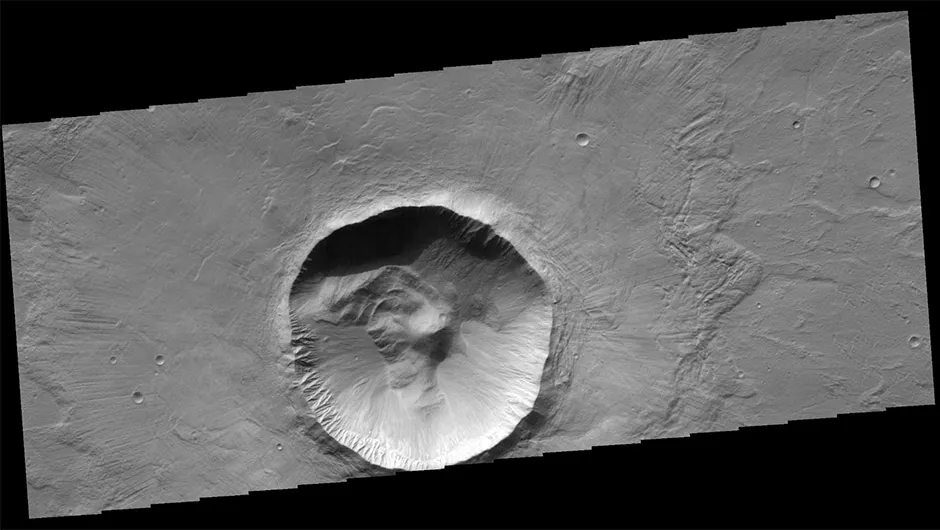Depressions in the Utopia Planitia region on Mars; structures that led NASA scientists to check for underground water ice. The foreground of this view covers about 1.8km across, while the depressions on the surface are typically about 100 to 200 metres wide. Image credit: NASA/JPL-Caltech/Univ. of Arizona
A large body of frozen water the size of Lake Superior has been discovered under the surface of Mars.
The discovery could provide future human missions to the Red Planet with an invaluable resource, and also reveal clues as to the climate history of Mars.
The water ice was discovered in the Utopia Planitia region in Mars’s mid-northern latitudes using the Shallow Radar (SHARAD) instrument on the Mars Reconnaissance Orbiter.
We know early Mars had enough liquid water on the surface for rivers and lakes. Where did it go?
Over 600 overhead passes were made to collect the data that led to the discovery.
The deposit ranges in thickness of about 260 feet to about 560 feet and is made up of between 50 to 85 per cent water ice, mixed with dust and rocks.
The basin has a diameter of about 3,300km and resulted from a major impact during Mars’s early history.
It lies in a position between the Martian equator and north pole that would normally see water ice sublimate into water vapour due to the planet’s thin atmosphere.
However, the newly discovered ice is shielded from Mars’s harsh atmosphere by a ground covering thought to be between three and 33 feet thick.

The discovery doubles the amount of known buried ice sheets in the northern plains of the Red Planet, but still makes up just less than one per cent of all known water ice on Mars.
While the ice is frozen today, the climate history of Mars suggests that the planet’s current axial tilt of 25 degrees – which allows water ice to accumulate at its poles – has varied to nearly twice as much over periods lasting 120,000 years.
This heats the poles and drives water ice to middle latitudes.
As a result, the water in Utopia Planitia may have been partly liquid water in the past, and this presents the possibility that it could once have hosted microbial life.

"It's important to expand what we know about the distribution and quantity of Martian water," says Mars Reconnaissance Orbiter deputy project scientist Leslie Tamppari.
"We know early Mars had enough liquid water on the surface for rivers and lakes. Where did it go? Much of it left the planet from the top of the atmosphere. Other missions have been examining that process. But there's also a large quantity that is now underground ice, and we want to keep learning more about that."
Joe Levy of the University of Texas, a co-author of the new study, says:
"The ice deposits in Utopia Planitia aren't just an exploration resource, they're also one of the most accessible climate change records on Mars.
We don't understand fully why ice has built up in some areas of the Martian surface and not in others.
Sampling and using this ice with a future mission could help keep astronauts alive, while also helping them unlock the secrets of Martian ice ages."
